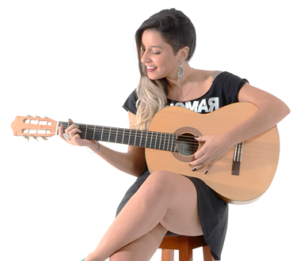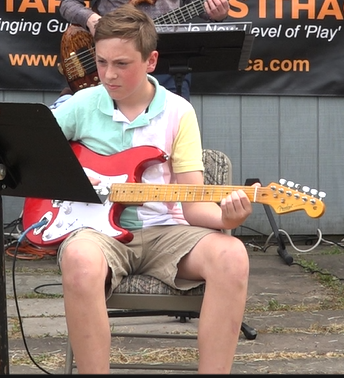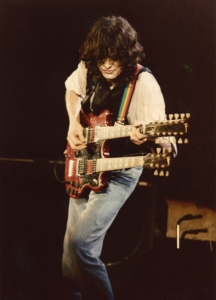Improving Your Musicianship Beyond the Practice Room
Improving your musicianship is a quest that permeates nearly every aspect of your life.
This is our fourth article in the series. The first, “So You’ve Got Talent, Now What?” was about ‘what’ musicianship is. The next, “Who Cares About Your Musicianship Anyway?” was about ‘why’ to develop it. The third, “You Can’t Hear What You Can’t Hear” was about ‘how’ to develop it. This leaves us with the ‘when’ and ‘where’ yet to be discussed.
You might think the answer to those two are obvious: practice in your practice room, whenever you have time to practice. These are both good answers and pertaining to the ‘where?’ we will discuss getting the most out of your practice space and time in a future article. In the meantime, let’s explore just how many more answers there might be to ‘when’ to practice besides
Musicians live and breathe music. They think about it all the time. This is not necessarily to say they are obsessed with it and lose track of daily life, but it means that they notice things that pertain to their musicianship constantly throughout their daily lives. There are so many opportunities to practice away from your instrument that we will spread our discussion out over 2 months, with this month exploring melody, harmony and rhythm, and next month considering possibilities for music theory, technique, etc.
I. Melody
Melodic study away from your instrument is very useful for both composition and improvisation. For example, you can hum improvised lines to yourself, so that you’re strengthening your sense of phrasing. If you’re in private, you could even do this out loud, either acapella or against a backing track. You could experiment with melodic concepts like theme and variation, varying the pitch range, melodic contour, etc.
You go out for a walk. You hear a bird sing. What makes it melodious? I mean, what exact elements or qualities can you decipher that you can use in your own songwriting or improvisation?
Composing away from your instrument may seem like a completely unapproachable feat, but if you sing, it could be as simple as humming a melody into your phone’s voice recorder. Or perhaps you know how to read and write standard notation. It is the most fool-proof way of remembering your ideas. I personally have used a dicta-phone, which while normally fine, did leave me with a few indecipherable melodies that I sleepily recorded in the middle of the night.
In short, writing melodies away from your instrument can be refreshing because they may be completely unlike others you have written, as they come straight from your imagination. You just need a clear go-to method of capturing those ideas in the moment.
II. Rhythm
Rhythms are everywhere. In the book, “Rhythm: What It Is and How to Improve Your Sense of It,” author Andrew C. Lewis discusses the many rhythms found in everyday environments from your windshield wipers flapping to your own walking to a conveyor belt running. All you have to do is notice them. Keep an open mind and an open ear and you’ll be amazed how much rhythm there is to digest.
Of course every song we hear has rhythms we can analyze, whether it’s a genre you like or not. I’ll never forget getting off the plane to Puerto Rico once when we were welcomed by a trio of musicians, and I was standing in the customs line transcribing the fabulous rhythms of the guiro player. Is there a beat that catches your ear? Which beats are accented?
Even if you don’t know standard rhythmic notation you can still write something like: 1 (2) & (3) 4 & for a rhythm where there are 4 onsets (note events) played within 4 beats and the “and of two” and the “and of four” are accented. Keeping a rhythm journal like this can really develop the rhythmic aspect of your musicianship. In fact, as we shall see further, keeping a small notebook on your person to take notes of musical ideas can improve your musicianship in lots of areas. Many great composers did this regularly.
III. Harmony
Harmony, the notes that back up a melody, might be harder to practice in your head than melody since it’s multiple notes at a time. However, if you have a pencil and paper handy, you can always sketch out chord sequences you think might sound good, even if you can’t hear them fully in your head and try them out later. I used to compose like this a lot. I’d wonder what going to do a distant key quickly would sound like, and I’d sketch out how it could work. Later, if I liked it when I got a chance to play it, I would write a melody to it.
Here’s an off-the-cuff example: if I’m in C major and I want to go to something completely unrelated like F#m, I could start by exploring if there are any chords in common. The first thing that comes to my head is that the VI chord of C is Am and the III chord of F#m is A, so all I have to do is change the quality of the Am to major and I can easily modulate to F#m. So I’ll write down the chord sequence:
|| C | G | F | Am |
| C | G | F | A |
| Bm | C#7 | F#m C#7 | F#m ||
As for writing a melody to the above, if your music theory is strong enough you could determine what the chord tones are for each chord and write a melody without ever having to consult your instrument. So, if you like how this progression sounds and write a melody to it, just remember me when you’re famous, okay?
IV. A Life Sentence
Once you become motivated to train your ear, learn more theory, become an expert in harmony, rhythm, and / or melody, of course the fastest way to learn is with a good teacher. When searching for a teacher, consider their experience in and ability to teach all these areas, don’t just look for someone with flashy technique.
Either way, once you’re into expanding and developing your musicianship and realize the possibilities that exist all around you every day, you’ll realize developing your musicianship goes way beyond the practice room, and you’re in it for life. You can check out any time you like, but you can never leave; nor would you want to.
(Be sure to check out part 2 where the discussion continues regarding music theory, technique, visualization, repertoire, and ear training.)
—
To claim your free trial lesson either in person or online, simply fill out this form and we’ll get back to you within 24 hours.



